35 Low-Light Indoor Plants That'll Thrive in the Colder Months
January 31, 2025
Lifestyle

January 31, 2025
Lifestyle

We may be in the depths of winter, but the freezing cold temperatures can't get us indoors. And while the trees outside have lost their leaves and the flowers are long gone, our houseplants are still going strong. Winter often comes with a lack of sunlight and low humidity levels—two things that most indoor plants require to survive. But for some, the low light of these shorter days isn't a bother at all. Low-light indoor plants are perfect for overcoming the challenges of the winter months.
Many low-light indoor plants are tropical varieties native to rainforests or forest floors, where they naturally receive filtered light. These indoor plants thrive near north-facing windows or in consistently shaded areas. Varieties like the ZZ plant prefer lower light levels, as bright light can damage their leaves.
While low-light requirements don't automatically imply that a plant is also low maintenance, choosing low-light indoor plants that require minimal care can be particularly beneficial for new plant parents or those who live in basement apartments or darker spaces. You can start with an easy-to-care-for plant like a spider plant or pothos to gain confidence before expanding your indoor garden. Read on to learn more about the 35 best low-light indoor plants that will thrive all winter long.
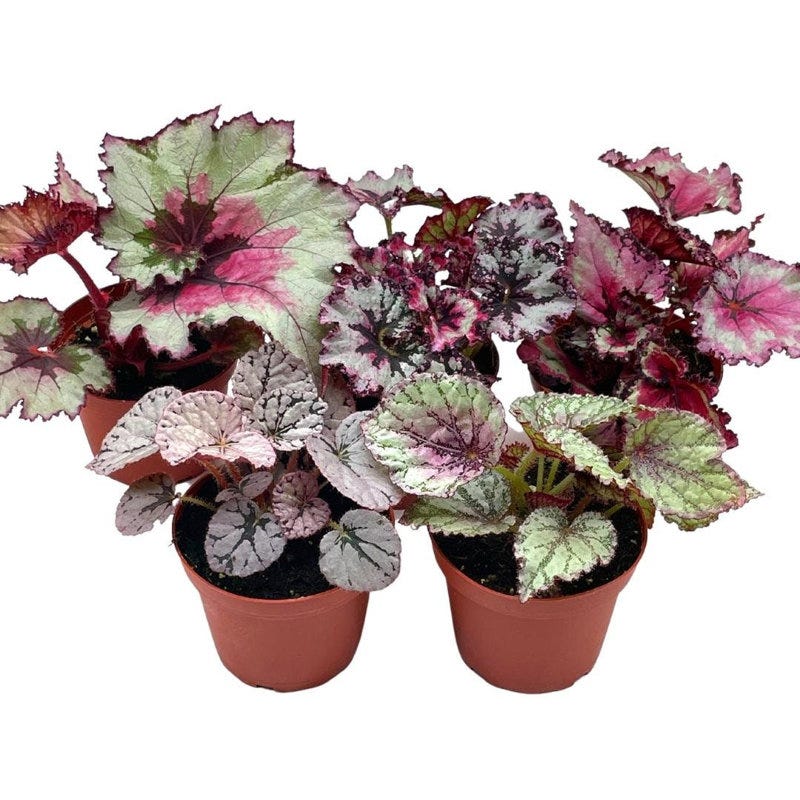
Water: When soil is dry, about once a week
Getting a begonia rex plant is an unexpected way to bring both green and red into your holiday color scheme. This low-light indoor plant loves bright, indirect sunlight as direct sunlight will scald the leaves. It thrives in room-temperature conditions (around 70 degrees) and prefers humid environments, especially in the cooler months.

Water: Every two to three days
If you’re looking for a dash of color in your home, a red anthurium is the perfect choice! The flamingo flower, as this low-light indoor plant is sometimes called, has blooms that can last up to eight weeks.
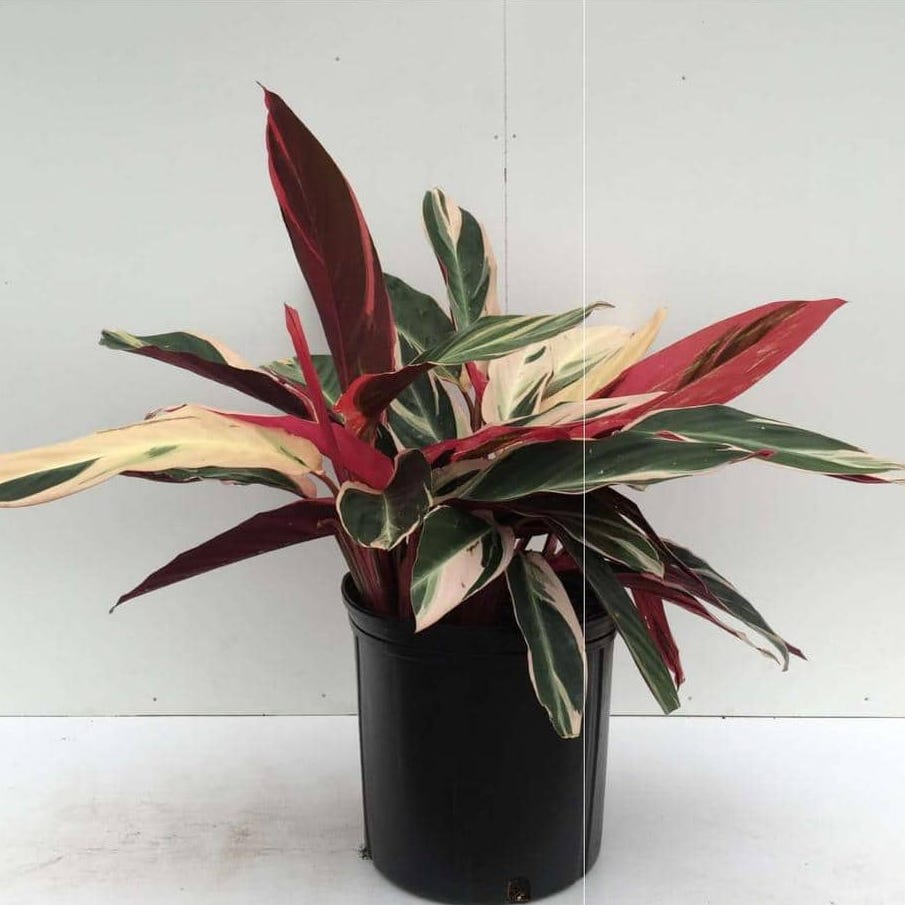
Water: every two weeks or so
In shades of white, pink, and green, this colorful specimen has large, variegated leaves. We love this low-light indoor plant for its low water and indirect light requirements, which make it ideal for houseplant beginners. Plant this one in a pot slightly larger than its nursery pot to allow the roots to spread out.
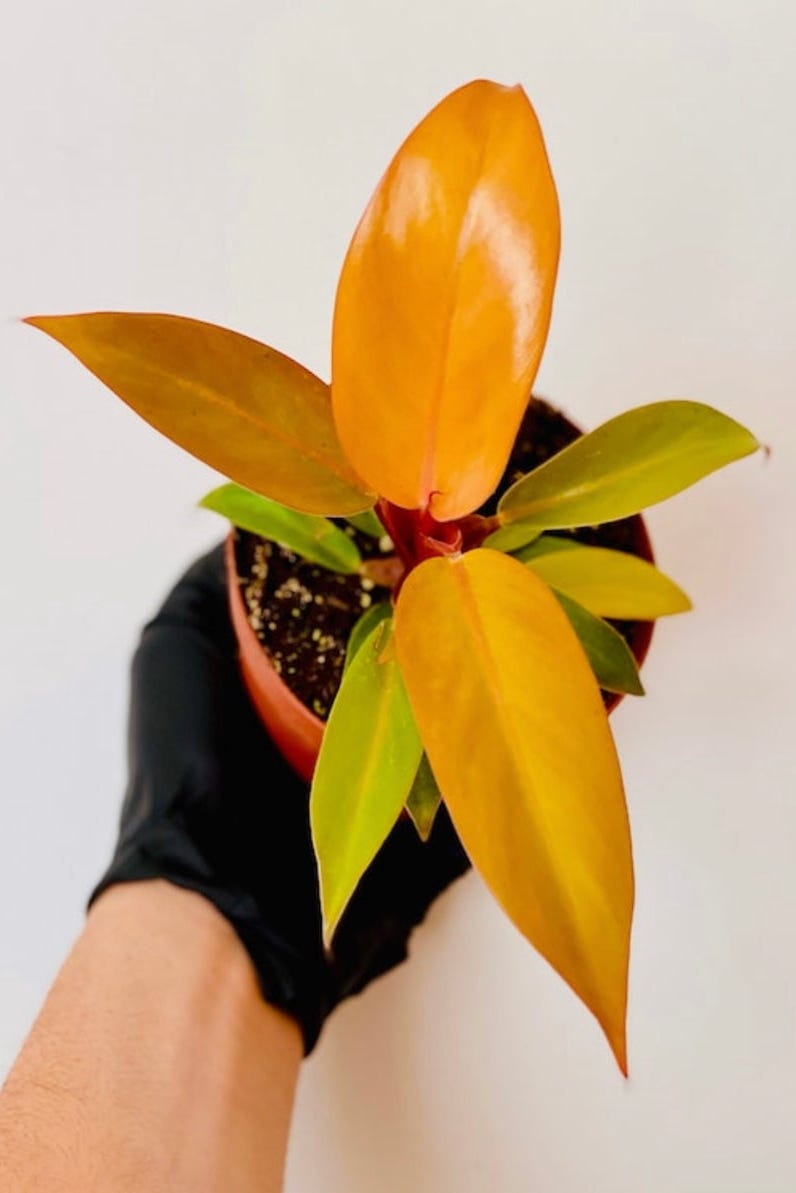
Water: Every 10 days to two weeks
This type of philodendron has leaves that mimic the colors of a stunning sunset. But as it ages, the leaves will slowly transform into a rich green or copper hue. Best for indirect light or north-facing windowsills, you'll know if this low-light indoor plant needs more sun if new leaves are growing without colorful pigmentation.
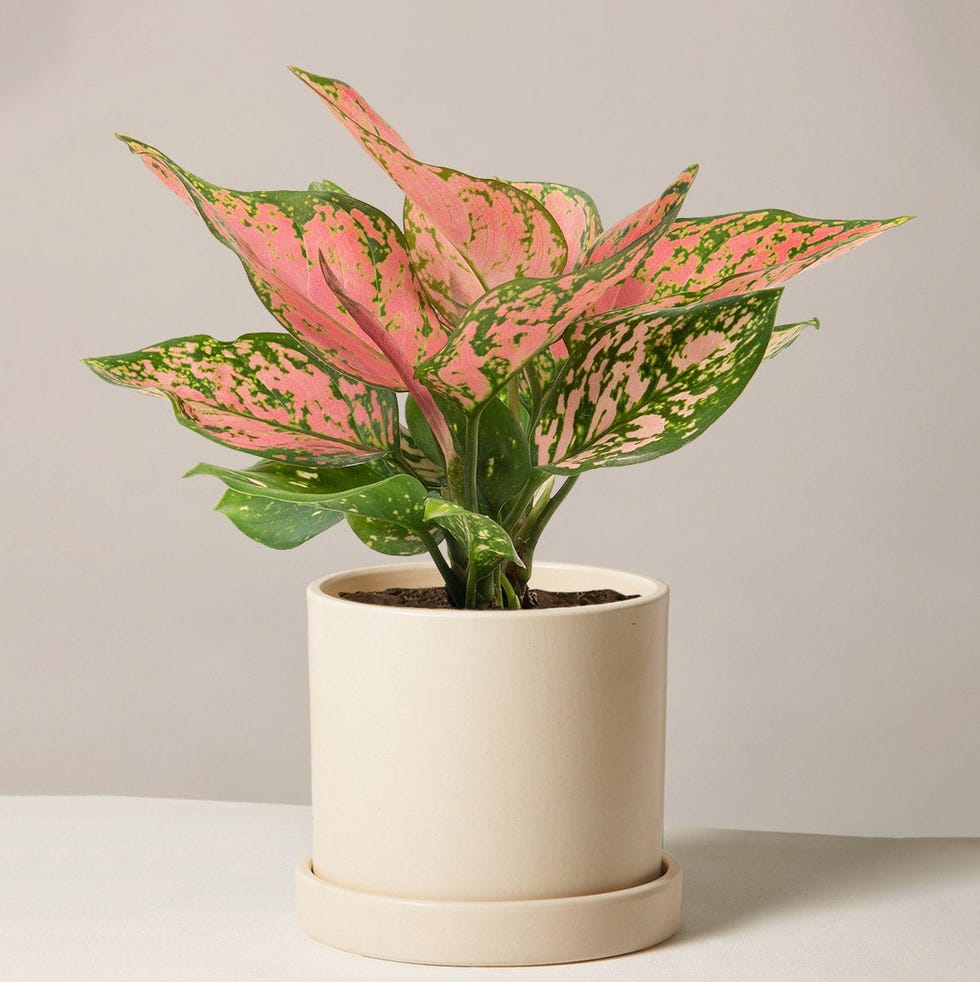
Water: Once every seven to 10 days
Since this is one of the most durable indoor plants on offer—it does quite well in low light and needs to be fertilized only once or twice a year—it’s ideal for beginner gardeners. In fact, these plants don’t even need natural light to grow; they’ll survive just as well in artificial light. They also do best in dry air, so this is one plant you may not want to display in your bathroom. Sadly, the aglaonema is toxic to cats, dogs, and horses, so keep it away from your pets.

Water: When soil is dry, about once a week
This low-light indoor plant can actually survive on fluorescent light alone and thrives in humid conditions like bathrooms. That’s not why we love bromeliads, though. They can grow on the ground, on rocks, or on other plants and trees. How cool is that? They’re also nontoxic to cats and dogs, making them one of our favorite plants around.
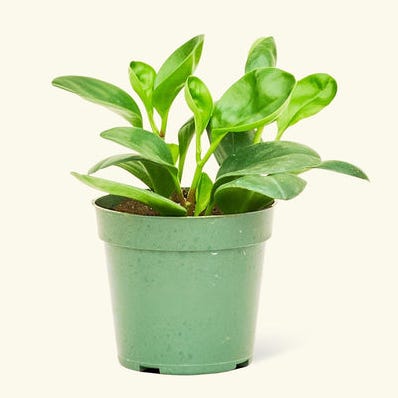
Water: Once a week
This low-light indoor plant holds a secret: It’ll bloom green flower spikes and white flowers throughout the spring. Just be sure to keep it out of bright, direct light as too much light will cause the leaves to scorch and burn. This is a tropical plant, so the warmer (and less drafty) your environment, the better.

Water: Once a week to every 10 days
Whereas most houseplants require ample sunlight to thrive, this Hoya variety prefers high humidity instead. Group it with your other houseplants or place it on a tray filled with water and pebbles to keep it moist. Lively Root recommends using plant food or fertilizer once a month to encourage strong new leaves.
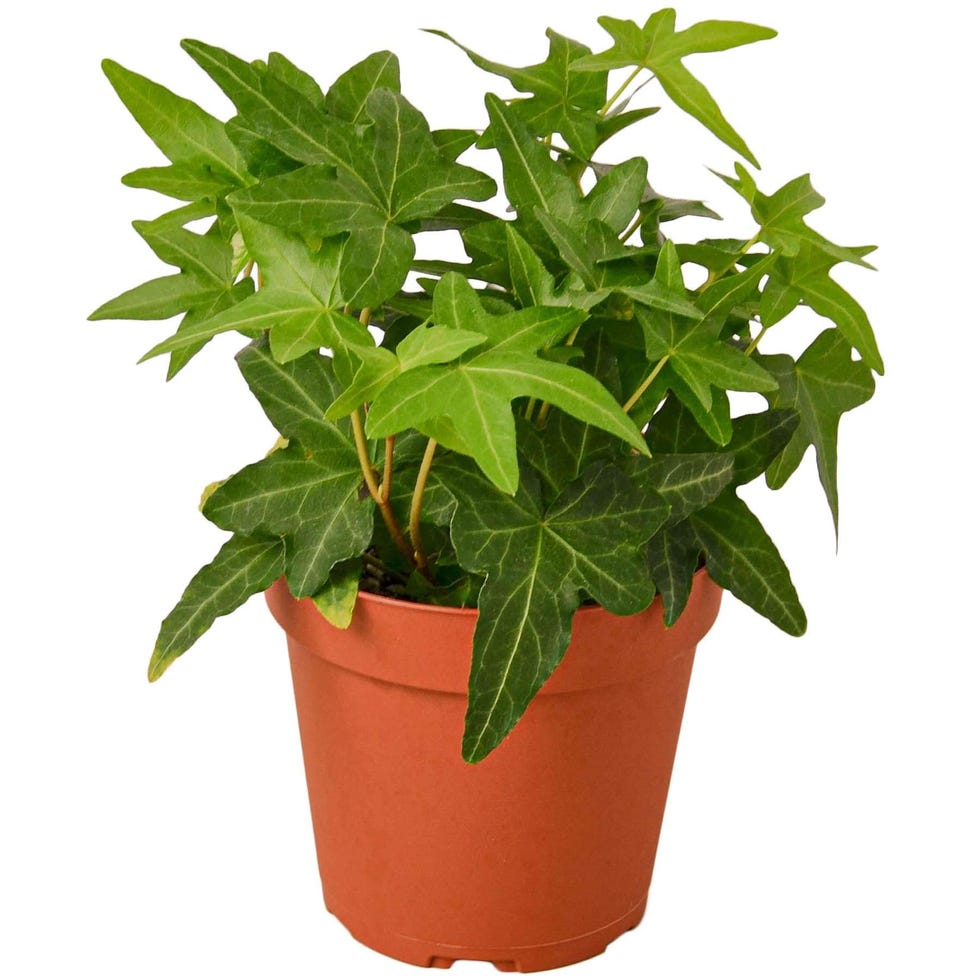
Water: Once a week
Ideal for bathrooms and other high-humidity environments, English ivy is a low-maintenance plant that doesn't require bright sunlight to thrive. Because this low-light indoor plant grows wild and fast, we recommend placing it in a hanging planter or using vine supports to help guide the new growth.

Water: Once a week
House Beautiful’s digital editor, Kate McGregor, opted for a Boston Fern because she knew it had a chance at surviving in her north-facing apartment that gets no direct light. So far, so good: “As long as I remember to mist it to add humidity, this low-light indoor plant does great in my low-light space,” she says. “I prune every few months to keep the fronds from getting unruly.”

Water: Once or twice a week
With its stunning variegated leaves and trailing vines, this pothos variety is a great way to break up the many shades of green in your houseplant collection. Provide this low-light indoor plant with indirect sunlight and hang it up high to let the vines really show off.
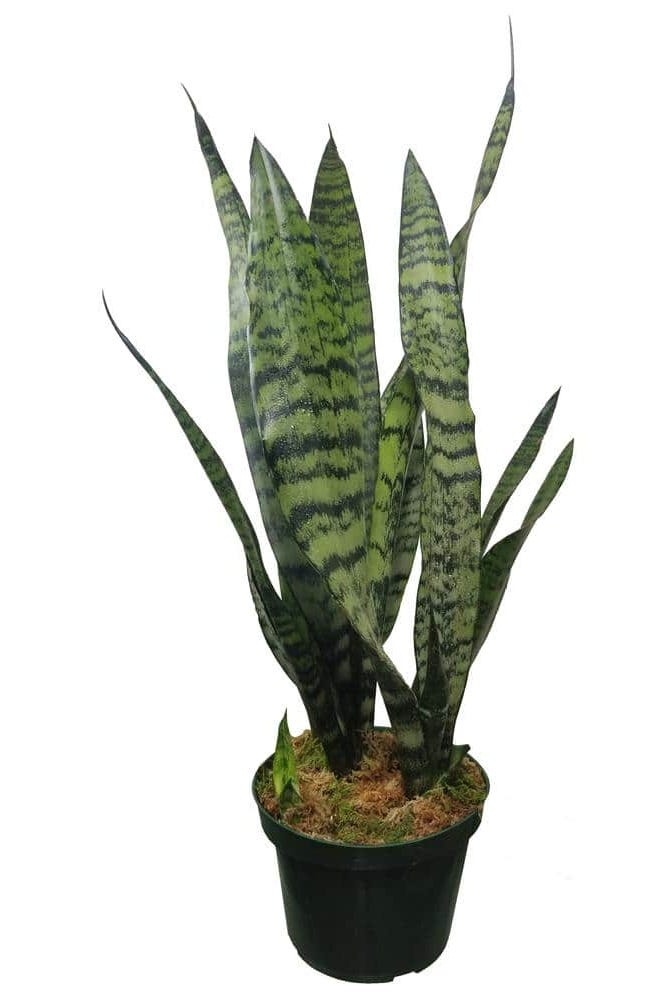
Water: Every two to three weeks, allowing soil to dry out between waterings
House Beautiful associate editor Jessica Cherner got a snake plant back in July 2020, and it's still thriving. “I got a plant because I wanted to add a little bit of color and life to my apartment, but I didn’t want to spend more than a few minutes here and there taking care of it,” she says. “I literally water it every six to eight weeks, and that’s more than enough.”
If you have pets, you may want to keep them away from your snake plant because, although it's not fatally poisonous, your cats and dogs can get sick if they ingest even a few bites.
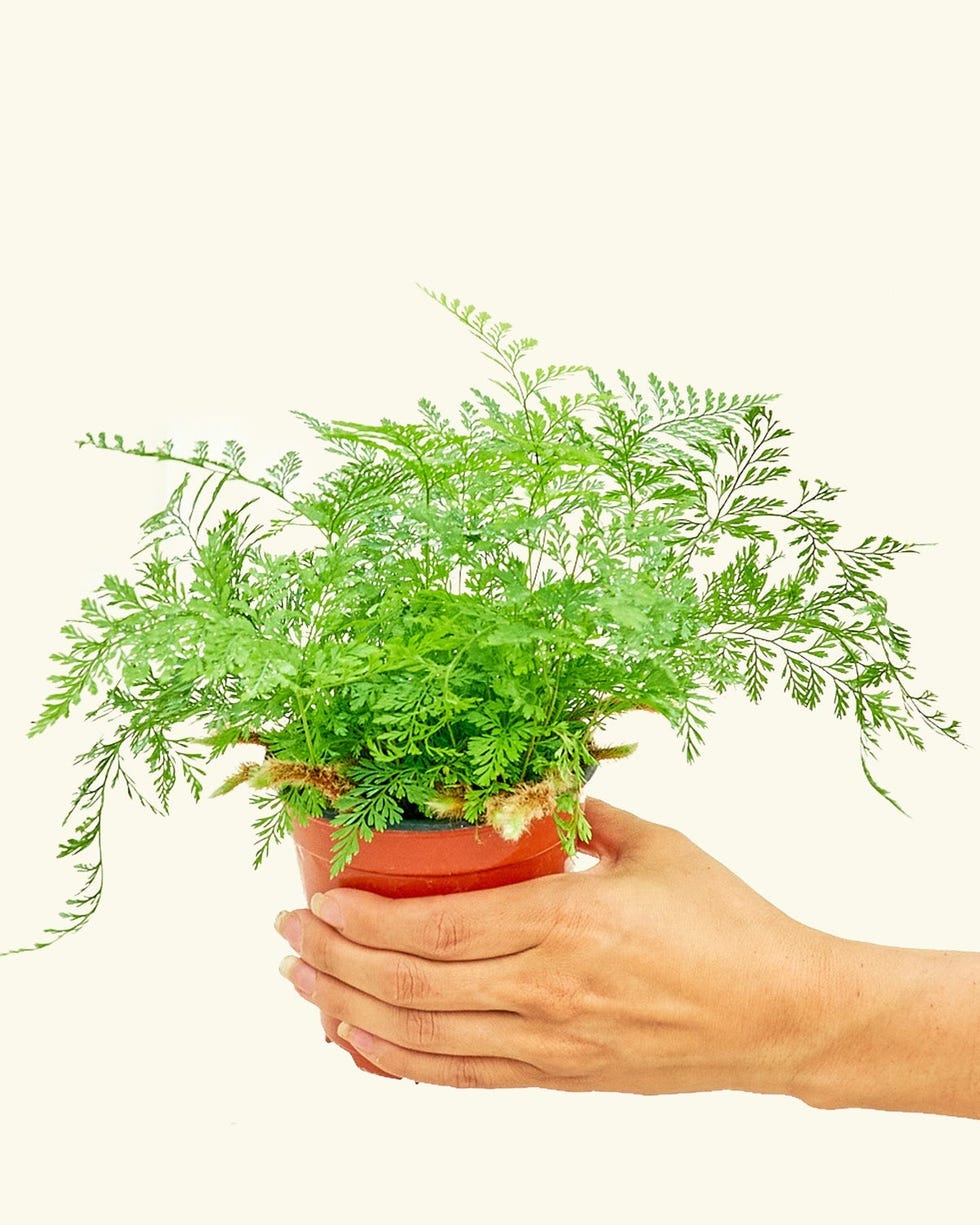
Water: Once a week
With fronds that resemble the shape of a rabbit’s foot (a well-known good-luck charm), the rabbit foot fern thrives in indirect light with plenty of humidity. If you have a window in your bathroom, that’s the ideal spot for this low-light indoor plant. But be sure to keep it off the windowsill since direct sun will scald its leaves.

Water: Every two weeks
Available in a variety of sizes, the prayer plant is named for its leaves that open and close as the sun rises and sets. While the changing leaves may seem finicky, this resilient plant is surprisingly easy to care for. Plus, it acts as a natural air purifier. Water it when the top quarter of the soil is dry.

Water: Every one to two weeks
This low-light indoor plant, also known as the Victorian parlor palm, is famously resilient. Plus, who wouldn’t love those pretty, feathery leaves that liven up any bland corner of your home? It does well in medium light but can survive in lower light areas as well. Though this palm likes humidity and extra moisture, you can water it sparingly. At least every two weeks is more than enough. It’s also nontoxic for your cats and dogs.
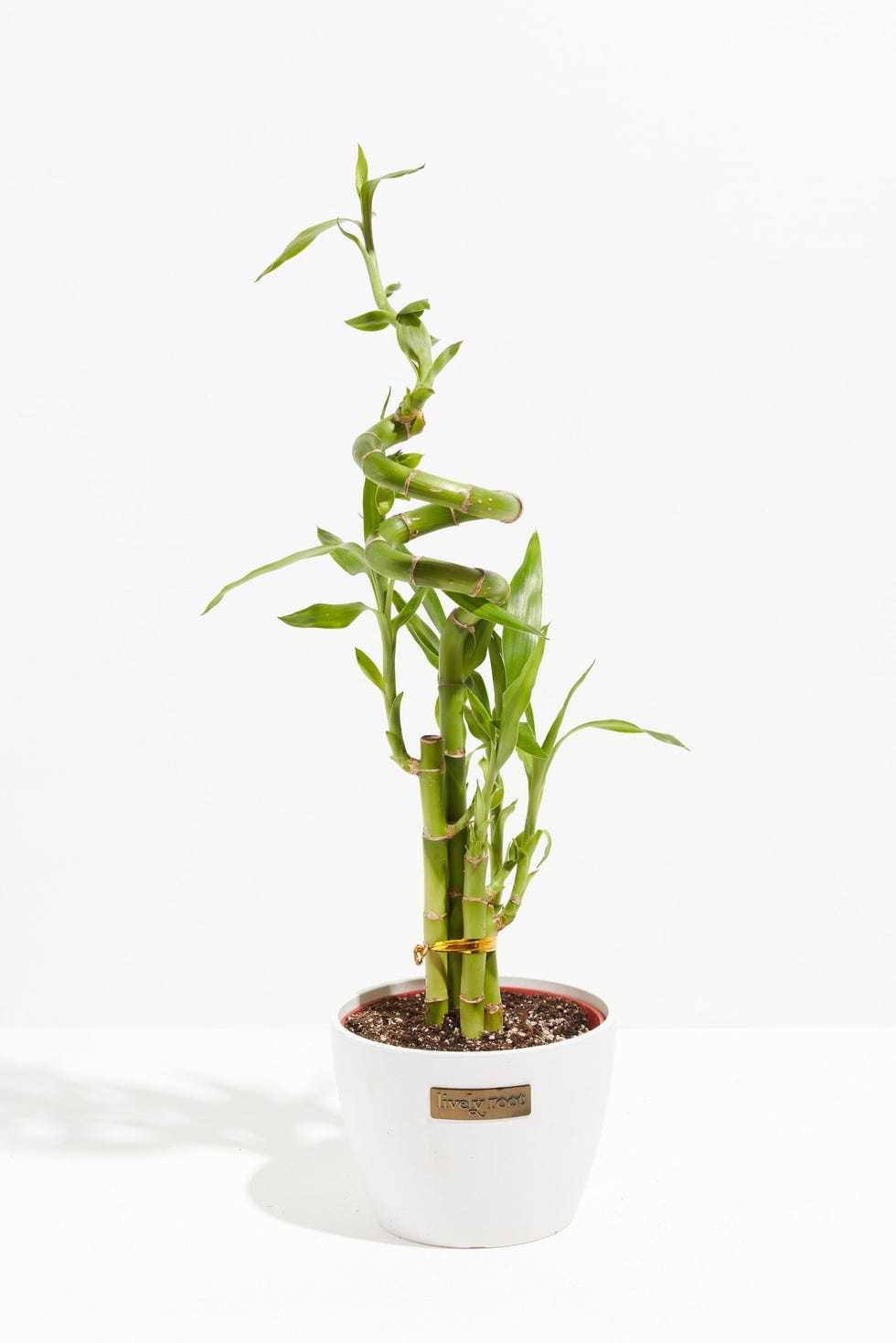
Water: Once a week, enough to cover the roots
Said to bring good luck and fortune, the lucky bamboo plant craves some light but can fully thrive in shady areas. Its best feature, however, is its ability to remove benzene, trichloroethylene, and formaldehyde from the air while also acting as a natural humidifier. Just know that this low-light indoor plant is toxic to cats and dogs.
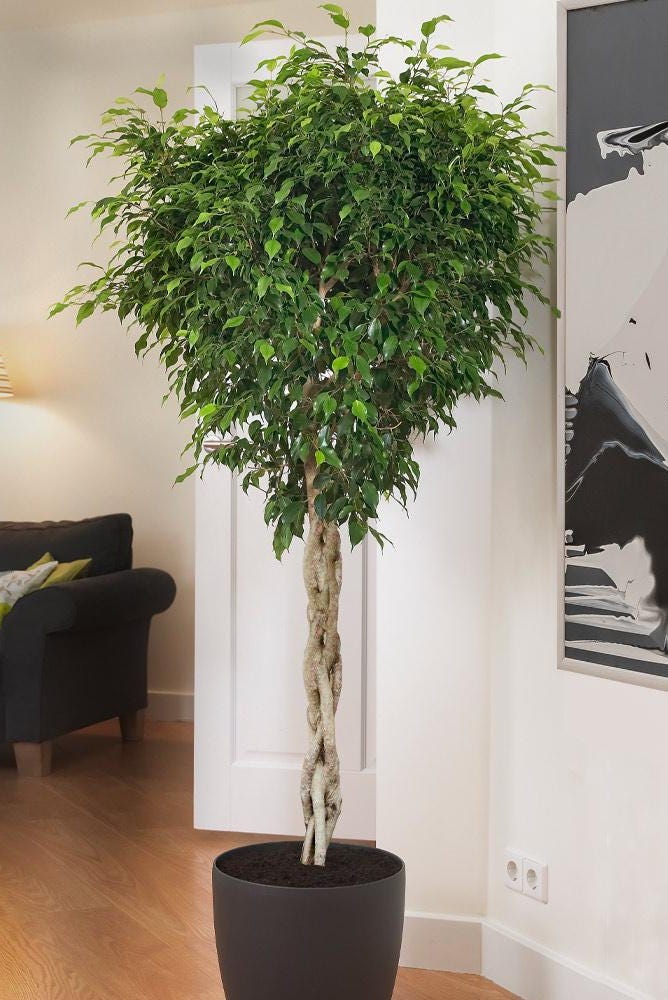
Water: Two to three times a week
This quick-growing tree adds life to any room in the house. Just make sure you’re giving it enough water. Place it in a deep planter filled with well-draining soil, and give it a big drink when the top several inches of soil are dry. It does well in indirect light, so instead of placing it by a window opt for a corner that gets plenty of diffuse light. The ficus tree is toxic to cats and dogs.
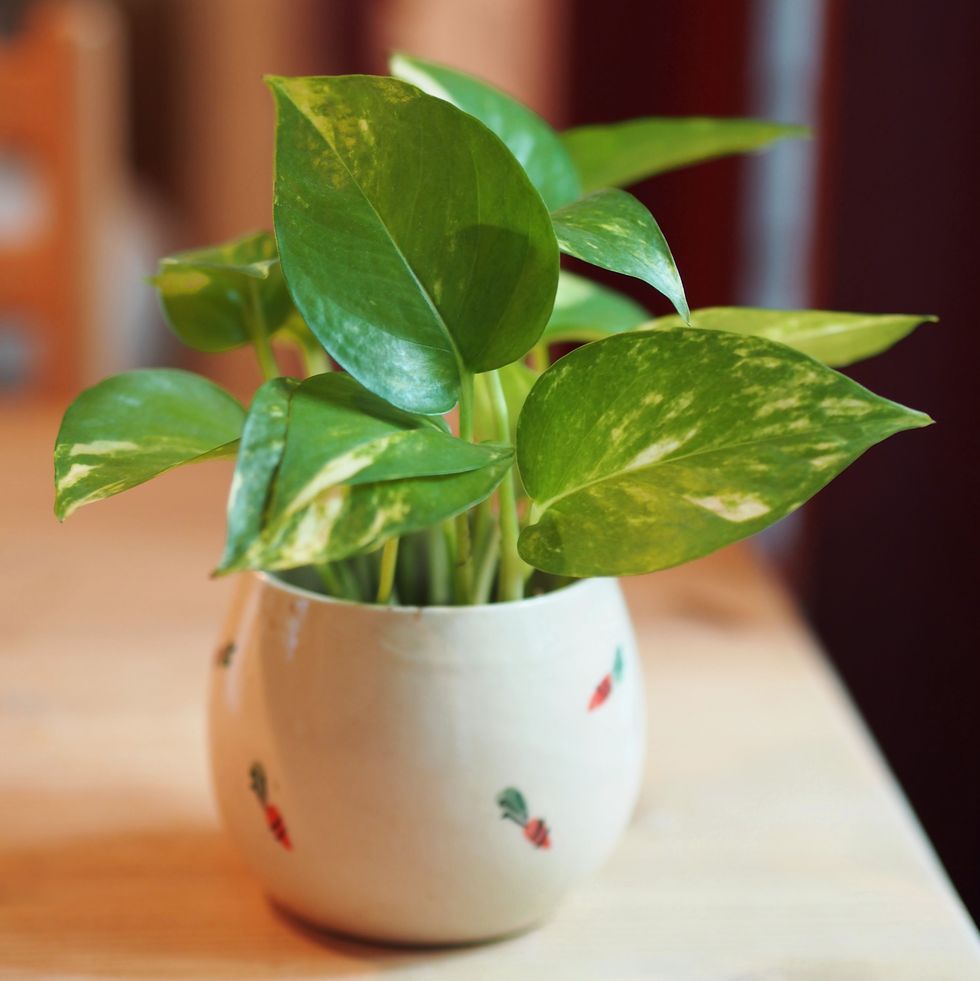
Water: One cup of water per week
The devil’s ivy golden pothos plant (also known as pothos, which is Greek for “longing”) gets its name from its unique ability to grow vines even in the worst conditions. Because of its superpower, we suggest keeping this low-light indoor plant on its own inside rather than among other plants outdoors, where it can basically strangle the rest of your greenery. Keep it in bright, indirect sunlight and away from your cats and dogs because it can be fatal if ingested.
Maranta Red Prayer Plant

Water: Once a week
Maranta red prayer plants prefer brighter light, but they can handle low light just as well. The only downside to minimal light is lackluster leaves, which isn’t indicative of any issues; it’s just a side effect of low-light conditions. These plants are a bit on the temperamental side because they require a lot of humidity to thrive. However, they're safe to have around cats and dogs.
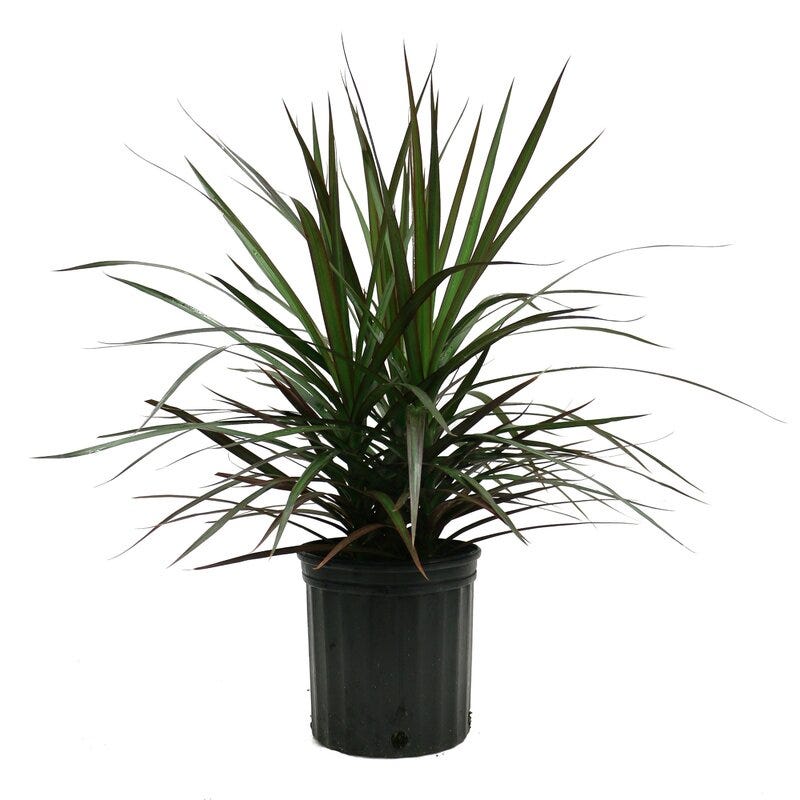
Water: Once a week
Spiky leaves that grow upward and have prominent red outlines make these plants pretty striking, but too much direct sunlight can damage them. Keep their leaves healthy by placing them far from the window that gets the most sun; this low-light indoor plant will do best in a spot that gets plenty of bright indirect sunlight. Though Madagascar dragon trees aren't known to cause any issues in dogs, they can induce drooling, vomiting, weakness, incoordination, and dilated pupils in cats.

Water: Once a week
The spider plant’s adaptability makes it super easy to grow and, therefore, one of the most popular houseplants. As far as care goes, it’s pretty straightforward. Just place your spider plant in bright to moderate light in a room that’s a comfortable temperature for everyone, including you. Any temperature that feels too hot or cold could lead to an early death for your spider plant. One more thing: Be sure to keep the soil slightly moist at all times. (You may want to invest in a spray bottle.) Lastly, these plants are not toxic to cats and dogs, so nothing will happen to your pets if they chomp on some leaves every now and then.

Water: Once a week
Hoyas, or wax plants, are not picky low-light indoor plants. They’ll thrive in bright light but do just fine in lower light conditions. They’re also super low maintenance and can bounce back if you forget to water them for a little while. One word of advice: Allow the soil to dry out completely between waterings because soil that’s too wet will cause the leaves to drop. If they do fall off and your pets eat them, they’ll live to tell the tale because wax plants aren’t toxic to cats or dogs.

Water: Moderate watering; every one to two weeks
You might not think the tropical monstera plant can handle anything less than bright, direct sunlight, but these beauties can actually tolerate even the lowest light conditions. They just won’t grow as quickly or as dramatically as they would in a brighter space. They’re also equally as toxic to humans as they are to cats and dogs, so this isn't a green you'd want to mix into your salads.
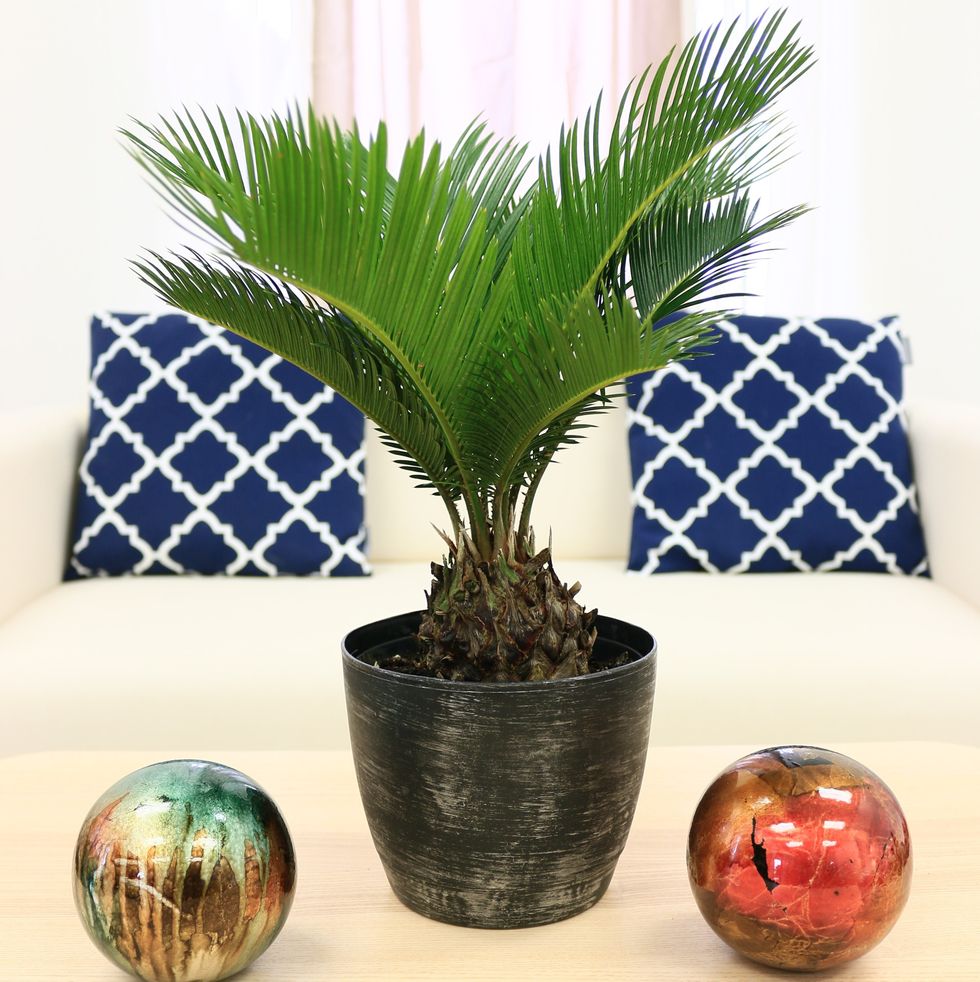
Water: One cup of water every two weeks
If you’ve ever dreamed of having a palm tree as part of your indoor jungle, here’s your chance. A sago palm might not be quite as tall as the ones you’ve seen on the beach, but it’s just as beautiful. Like most tropical plants, it grows best in bright, direct light but can certainly survive in darker nooks of the home. It’s a bit pickier about water, though. Only give your sago palm a drink when the top inch of soil has dried out. The easiest way to kill your plant is to overwater it. Unfortunately, every bit of this low-light indoor plant is toxic to cats and dogs, including the leaves and trunk.

Water: Once a week, less during colder months
Staghorn ferns thrive in high-humidity environments with indirect light. They’re not quite as low maintenance as some of their tropical cousins on this list, but they’re still worth the investment. To keep yours healthy, be sure to offer good air circulation, warm temperatures, lots of humidity, and consistent moisture. Not only are they pretty, but they can also purify the air, so they’re ideal for bedrooms and bathrooms. Feel free to put them anywhere, though, because they’re not toxic to cats or dogs.
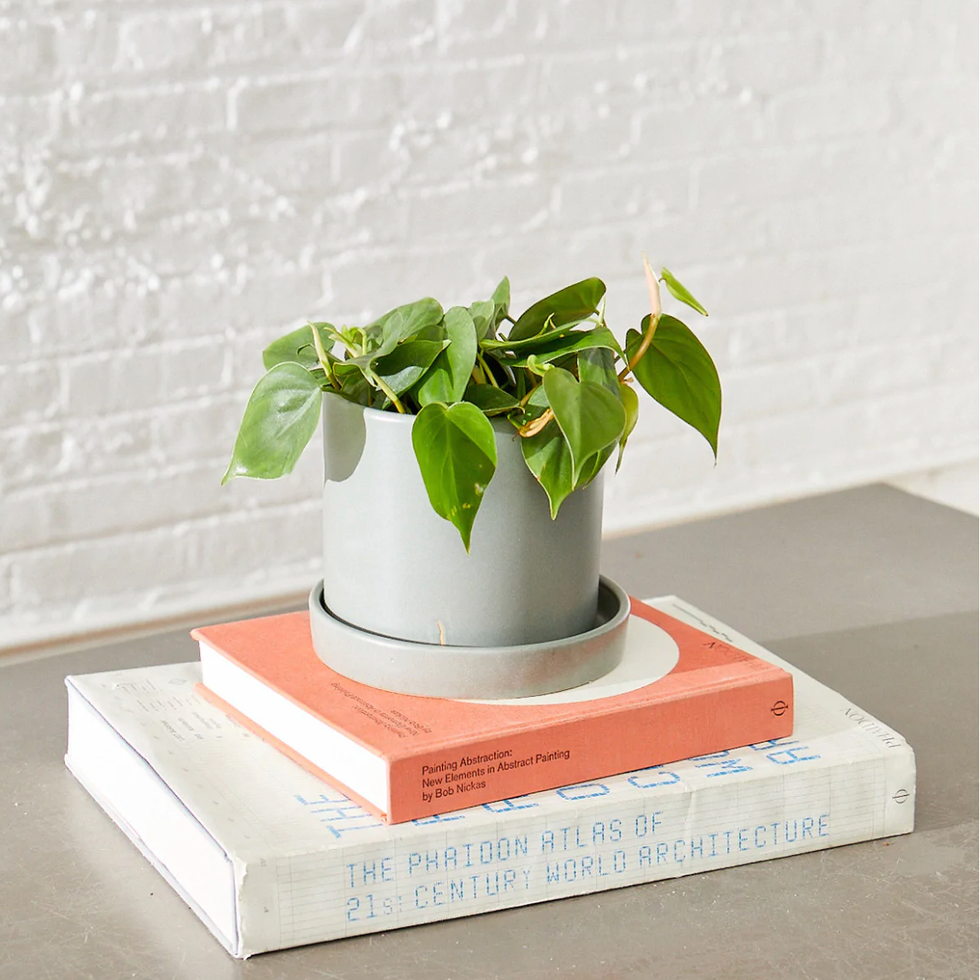
Water: Every one to two weeks
The sweetheart plant (a nickname it earned because of the shape of its glossy leaves) can handle dim rooms but requires pinching to prevent it from growing in long, single stems. To keep this low-light indoor plant healthy, prune it regularly, moisten the soil every day, and repot it every few years. Don’t be fooled by the name, though: These plants are highly toxic to cats and dogs if ingested.

Water: Once every two weeks
Filtered light is ideal for dieffenbachias, so try using a curtain as a barrier between your lush leaves and the sun’s sometimes harsh rays—especially during the spring and summer. Avoid watering it until the top two inches of soil are completely dry, then pour enough water into the pot to soak the soil. Just like the last few plants on our list, this one is toxic to cats and dogs, so keep it somewhere your pets won’t get into it.
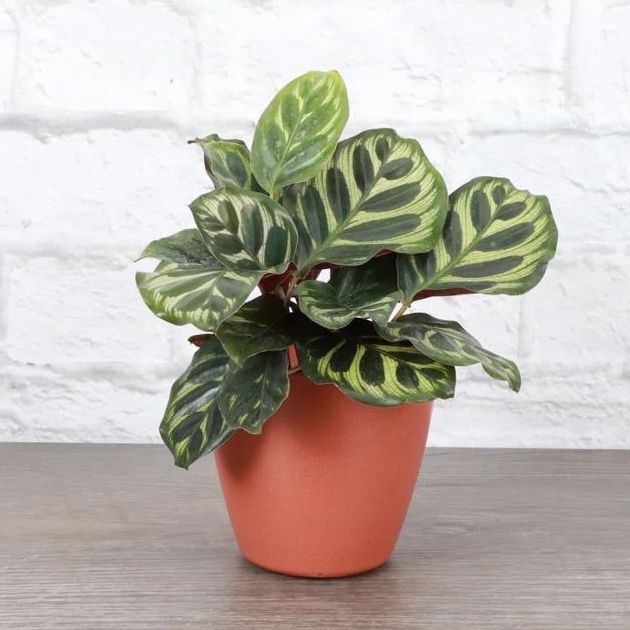
Water: Every two to three days
With pink and red flecks, the colorful calathea adds an extra punch to your indoor plant collection. It likes bright light so much that it could spend up to eight hours in the sun daily. That said, it’s perfectly happy in the shade. This low-light indoor plant is nontoxic and pet-safe.
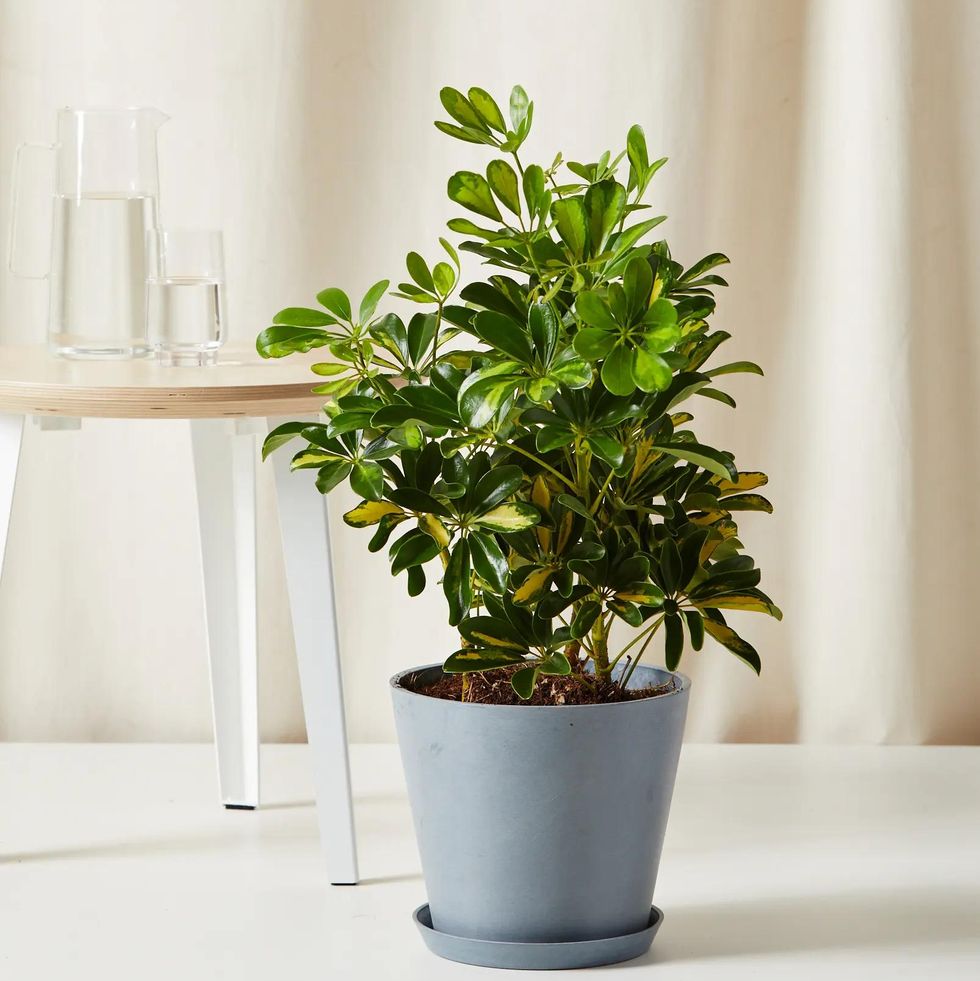
Water: Once every 10 days
Variegated Schefflera plants, which are native to Taiwan and South China, are a great low-light choice because they grow slowly, so you don’t have to worry about them overpowering a small space. The only problem? They’re not pet-friendly, so if you have a cat or dog, it may not be the best plant for you because you can’t really put it anywhere other than the ground.

Water: Every one to two weeks
This cute low-light indoor plant with thick, spoon-shaped leaves is both pet-friendly shade-loving. In fact, too much intense sunlight can hurt the waxy leaves.

Water: Every one to two weeks; more if in brighter light
Rippled edges give the bird’s nest fern a unique, fun look. The bird’s nest fern is also a pet-friendly plant that thrives in indirect light. As is the case with similar low-light indoor plants, it won’t grow nearly as fast in a darker room, but it won’t be any less healthy—especially if it’s getting the right amount of water. Plus, it's not toxic to humans or pets.

Water: Once every two weeks
This whimsical plant, which is also called the Dr. Seuss tree, can grow to fit perfectly on a tabletop or into a full-on tree. Plus, it’s adaptable enough to survive in just about any light level. These palms grow best in fairly dry soil. They’re also nontoxic to your cats and dogs, making them an easy choice for anyone looking to add a touch of greenery to their space.

Water: Six to eight ounces every three weeks
If you want a larger indoor plant that can handle medium, indirect light, opt for a money tree, which is nontoxic to cats and dogs. Its cool braided trunk is an instant eye-catcher. Plus, it's pretty easy to care for. Just be sure to plant it in a well-draining potting mix and place it a few feet away from a window that gets a lot of light. Rotate this low-light indoor plant every now and then to keep it growing straight instead of reaching toward the window.

Water: Once a week
The Philodendron Brasil can grow to between three and six inches tall from the soil line to the top of the foliage, so if you’re looking to infuse an empty wall or windowsill with a pop of bright color, it’ll get the job done. It thrives in bright, indirect light but can certainly handle medium to low indirect light. Just keep it out of your pets’ reach because it’s quite toxic to cats and dogs.

Water: Every two to three weeks
Unlike most plants, the ZZ plant requires water only every few weeks, making it an ideal get for new plant parents. It does best in medium to bright indirect light, but it can tolerate low indirect light perfectly well. If you’re keeping it in bright light, just be sure to water it when you notice the soil has completely dried out. Most importantly, keep this toxic low-light indoor plant away from cats and dogs.
Stay up to date on the latest real estate trends.

Buyer
October 10, 2025

Seller
October 10, 2025
These days, you’re going to want to get your price right when you get ready to sell your house.

Buyer
October 9, 2025
If you’ve been following real estate news lately, you’ve probably seen headlines saying home prices are flat.

Buyer
October 8, 2025
Learn how Jackie (Jaleh) and Richard sold a stunning modern Menlo Park home with an attached ADU in just two weeks through a data-driven pre-market strategy.

Buyer
October 7, 2025
You want mortgage rates to fall – and they've started to. But is it going to last? And how low will they go?

Buyer
October 3, 2025
If you’ve been watching from the sidelines, now’s the time to lean in. It’s officially the best time to buy this year.
We Guide Homeowners through the complicated process of selling their home using our 4 Phase Selling Process and 3 Prong Marketing Strategy that alleviates their stress and moves them effortlessly to their next destination. Schedule a 15 Minute Complimentary Strategy Session Today